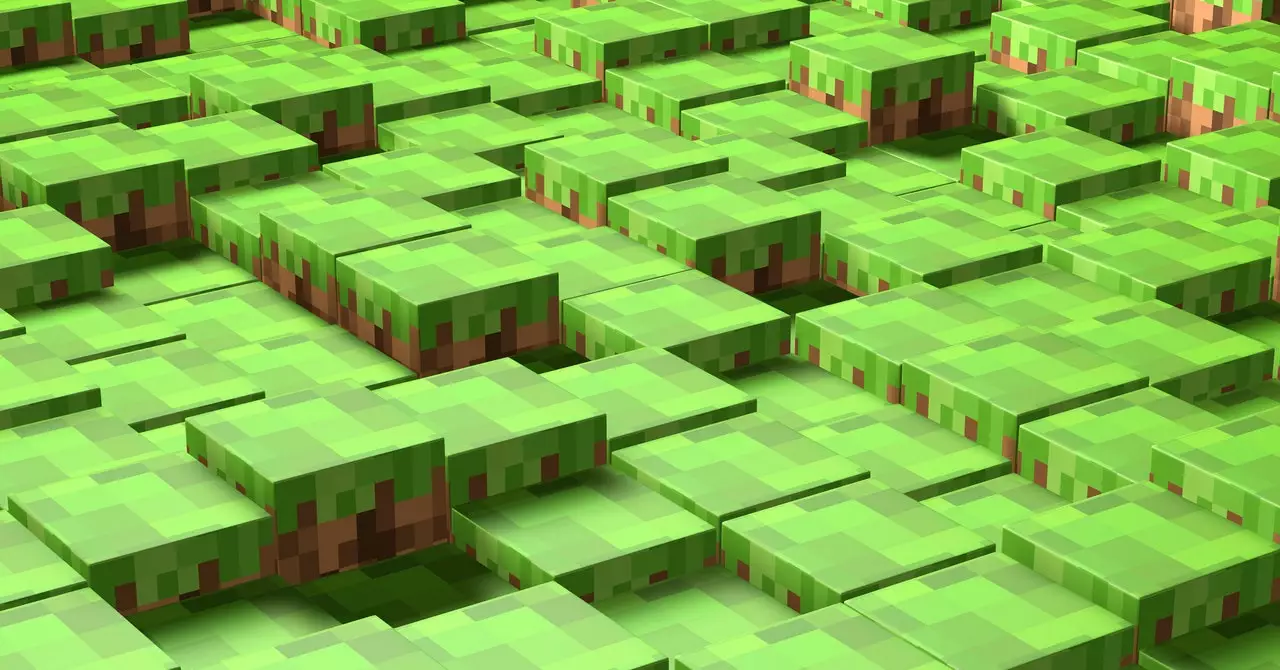Launched last month, Oasis has emerged as a captivating alternative to the beloved phenomenon known as Minecraft. Developed by Decart, an Israeli AI startup, in collaboration with Etched, a custom silicon design firm, the game’s most striking feature lies in its use of an artificial intelligence model to create vast, ever-evolving landscapes. While Minecraft has secured its place as a staple of gaming culture, Oasis adds an odd twist: the in-game environment is entirely generated by an AI, providing players with a surreal and unpredictable experience that is both fascinating and bizarre.
At its core, Oasis employs transformer-based AI technology, akin to that which powers large language models. This innovative framework allows the game to draw from a wealth of input—most notably, an extensive dataset of Minecraft gameplay—to dream up each frame. Players engage with this algorithm through simple actions like mouse movements or clicks, resulting in environments that are in constant flux. Unlike traditional gaming, where rules and mechanics are heavily scripted, Oasis relies on the AI’s interpretation of visual stimuli, making each play session uniquely unpredictable.
This dynamic creates a compelling paradox: the world is neither wholly random nor rigidly defined. Instead, it flirts with the eerie concept of a reality that shifts and changes right before players’ eyes. One moment, players might be admiring blocky structures, and the next, they could find themselves surrounded by strange avatars or disjointed landscapes that seem to defy the laws of physics. A particular allure of Oasis is in its ability to elicit spontaneous creativity, pushing players to explore the game’s boundaries in ways that were previously unimaginable.
The visionary design of Oasis encourages creativity beyond conventional gameplay. Players are even encouraged to upload their own images, which the AI then translates into the game’s blocky aesthetic. For instance, when a user uploads a photo of a beloved pet, such as a cat, the AI can reinterpret that image into a fantastical landscape, further enhancing the dreamlike quality of the game. This interface between personal expression and AI capabilities transforms the gaming experience into a collaborative art project, albeit one with an unpredictable outcome.
Such explorations have contributed to the game’s virality, capturing the imaginations of players eager to experiment with the system. In fact, the sheer unpredictability can lead to amusing or eerie results, such as being teleported to a shadowy version of a known locale from Minecraft. The imaginative possibilities ignite curiosity, making it easy to see why Oasis has generated considerable buzz in digital communities.
However, despite its innovative premise, Oasis is not without its shortcomings. Critics have pointed out that the AI-driven nature of the game often results in inconsistencies that can detract from the overall player experience. Julian Togelius, a computer science professor, suggests that although the generative AI has immense potential, it currently feels “like an answer in search of a question.” This idea reflects the ongoing struggle to balance artistic freedom with a cohesive gaming framework.
Frank Lantz, a game designer and academic, articulates further concerns, suggesting that the gameplay experience is ultimately hindered by the uncanny nature of the AI’s outputs—where familiar elements are warped into something unsettling. He underscored the potential for innovation, remarking that a skilled game designer could potentially harness the quirks of this technology to develop an engaging gameplay experience. Still, for now, Oasis dances on the edges of ambition and effectiveness.
As Oasis garners attention, the implications of AI-driven game design continue to unfold. Could this be the future of gaming? While the technology showcases impressive advancements, the gaming industry must find ways to address these inconsistencies and build upon its strong foundations. By refining the interplay between player agency and AI interpretation, game developers may unlock even richer virtual realities that maintain both the element of surprise and structural integrity.
Oasis stands as a bold experiment at the turning point of technology and creativity. While the surreal and often chaotic nature of the game may not deliver a seamless experience, it nevertheless challenges the boundaries of what gaming can encompass. By fusing art and play, Oasis invites players into a new dimension of creativity, offering a glimpse into the future of generative AI in the world of interactive entertainment.

